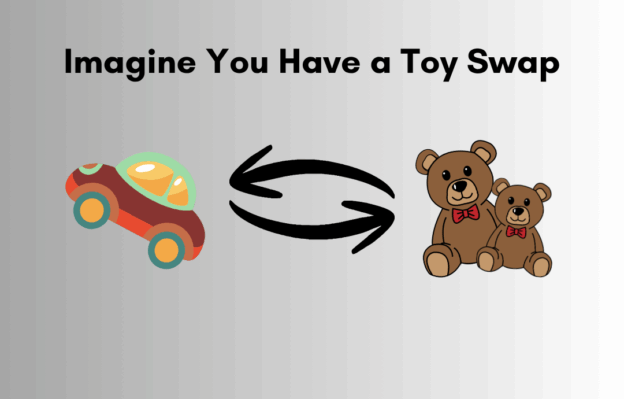Part of a short series of articles on using MetaTrader4, written on request. This does not mean I endorse trading, MetaTrader4, or that I’d do this because I wouldn’t. I design and build IT systems, and that’s what I’ll stick to, ta. This article is “Imagine You Have a Toy Swap”.
Let’s explain currency trading using an example of dollars to euros.
The Situation:
- You have a toy car (which represents dollars).
- Your friend has a toy doll (which represents euros).
How Toy Swapping Works:
- Toy Swap Rates:
- Sometimes, you can swap your toy car for one toy doll.
- Other times, you might need two toy cars to get one toy doll, depending on how much the toys are valued at that time.
What Happens When the Euro Increases in Value:
- Let’s say yesterday you could swap 1 toy car for 1 toy doll.
- Today, toy dolls have become more valuable. Now, you need 2 toy cars to get 1 toy doll.
Example:
- Yesterday’s Swap:
- You have 10 toy cars (dollars).
- You swap 1 toy car for 1 toy doll.
- So, you get 10 toy dolls for your 10 toy cars.
- Today’s Swap:
- Toy dolls are now more valuable.
- Now, 1 toy doll costs 2 toy cars.
- If you have 10 toy cars, you can only get 5 toy dolls today because each toy doll costs more toy cars now.
In Currency Trading:
- Yesterday, if you had 10 dollars, you could get 10 euros because 1 dollar = 1 euro.
- Today, if the euro increased in value, 1 euro might now be worth 2 dollars.
- So, with 10 dollars, you can only get 5 euros now because each euro is more expensive.
Why This Happens:
- The value of currencies (like euros and dollars) changes based on how people buy and sell them in the market.
- If many people want euros, the value of the euro goes up, just like how the toy dolls became more valuable.
In simple terms, currency trading is like swapping toys, and the value of each toy (currency) can change, affecting how many toys (euros or dollars) you can get in return.
